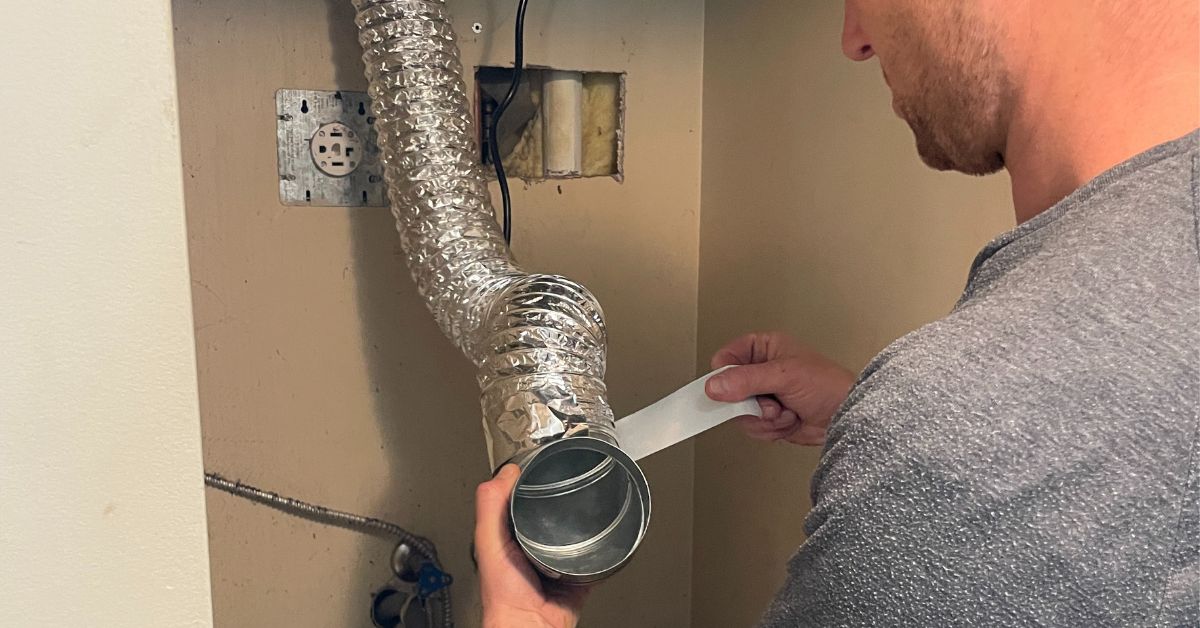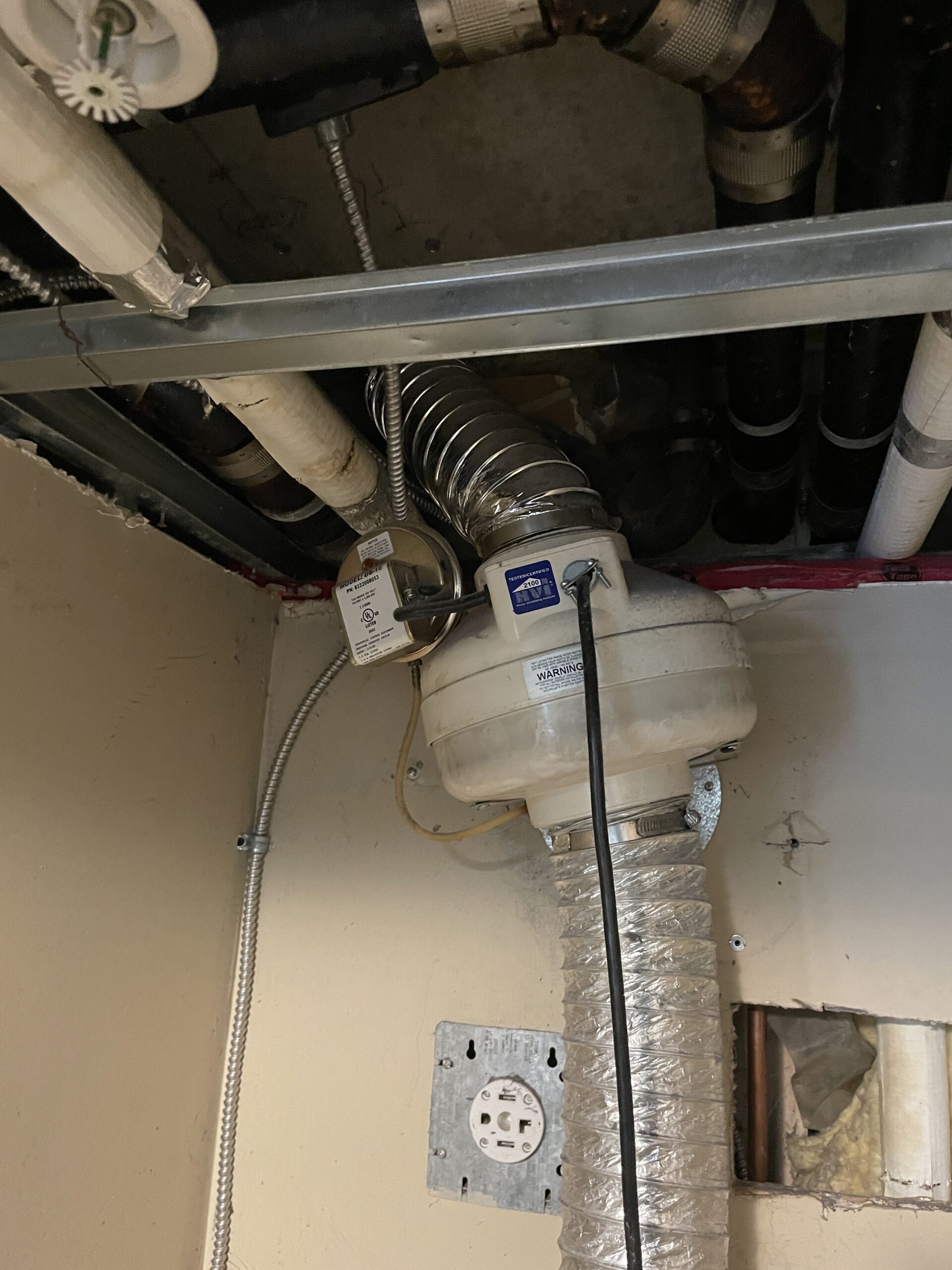Every home relies on a dryer to handle laundry quickly, but few realize how dangerous that convenience can become if vents are ignored. Fires caused by dryer lint happen more often than most people expect, and the warning signs are often invisible until it’s too late. Understanding how simple lint buildup transforms into a fire hazard can save lives and property.
Trapped Heat from Lint Buildup Raises Fire Risk Drastically
Dryers generate intense heat to dry clothes, and that heat needs a clear exit route. When lint clogs the vent, the hot air has nowhere to go and builds up inside the machine. That trapped heat doesn’t just slow down the drying process; it increases the chance of ignition. The longer the lint stays inside, the hotter the system becomes, turning an everyday appliance into a dangerous risk.
What many people don’t realize is that even small amounts of lint can block airflow enough to trap heat. The dryer keeps working harder, but the heat lingers and spreads across flammable material. Over time, this creates conditions that make the dryer act like a furnace stuffed with kindling. Regular vent cleaning eliminates that hidden fire hazard before it has a chance to ignite.

Vent Blockages That Ignite When Heat Isn’t Vented Properly
A dryer is designed to push hot, moist air outside the home. If the vent is blocked, that air backs up, creating pressure and heat inside the duct. When the buildup becomes severe, the vent itself can get hot enough to ignite lint clumps along its walls. A single spark or excessive heat in that confined space can start a fire without warning.
Blockages also force heat into areas not built to handle it, such as the vent hose or the dryer’s motor housing. These materials can overheat quickly and ignite lint deposits. Many homeowners are shocked to learn that vent clogs don’t just slow drying times—they create perfect conditions for ignition in places that can’t be seen without professional inspection.
Lint’s Highly Flammable Nature Becomes Dangerous When Compressed
Lint is one of the most flammable materials in the home. Made up of cotton fibers, polyester threads, and dust, it ignites faster than paper when exposed to sparks or heat. Inside a dryer vent, lint gets compressed into dense mats. This packed material becomes even more dangerous, acting like a solid fuel source that burns rapidly once ignited.
When compressed lint sits in a hot, enclosed vent, the risk grows by the day. It doesn’t take much—just a small electrical spark or a surge of heat—to ignite the dense fibers. Unlike loose lint from a filter, this buildup burns hotter and faster, spreading flames through the ductwork and into the home. That’s why routine vent cleaning is critical for preventing compressed lint from becoming a hidden fire starter.
Restricted Airflow Makes Your Dryer Overheat and Strain Components
Dryers rely on airflow to regulate their internal temperature. Restricted airflow from lint clogs forces the machine to run longer and hotter than designed. Over time, motors, belts, and heating elements strain under the pressure, wearing out faster and creating hot spots that increase fire risk. What looks like a simple mechanical issue may actually be the result of poor airflow.
This constant overheating doesn’t just wear down the dryer—it creates ignition points inside the appliance. Strained wires, overworked heating coils, and friction in moving parts can generate sparks that ignite nearby lint. Cleaning vents restores proper airflow, keeping the dryer cool and extending its life while lowering the risk of sudden ignition.
Sparks Interacting with Lint Build-up Create a Hidden Fire Trigger
Lint acts like tinder, waiting for a spark. Inside a dryer, sparks can come from worn electrical connections, failing switches, or overheated wires. When lint is present, those sparks have an immediate fuel source. Fires often start inside the vent or the back of the dryer, hidden from view until smoke escapes into the home.
Because sparks happen unpredictably, lint buildup makes them far more dangerous. A spark alone might fizzle out, but combined with lint, it can create a fire that spreads in seconds. By keeping vents clear, homeowners remove the fuel that turns routine electrical sparks into devastating house fires.
Excessive Heat Cycles That Dry Slowly Can Ignite Accumulated Fibers
A dryer that takes longer to finish a load isn’t just inconvenient—it’s a warning sign. Excessive heat cycles mean the machine is struggling to push hot air through clogged vents. During these longer cycles, temperatures rise, and lint inside the ducts gets hotter with each run. That constant exposure to heat increases the chance of ignition.
Slow-drying loads also encourage homeowners to restart the cycle multiple times, layering heat onto already stressed components. This repetitive heating turns the dryer into a fire hazard, particularly when fibers inside the vent are already dry, compressed, and flammable. Regular vent cleaning prevents the cycle from dragging out, keeping both clothes and homes safe.
Hidden Lint Behind Walls Becomes a Silent Ignition Source
Dryer vents often run behind walls, making them easy to forget and impossible to see without professional tools. Over time, lint clumps form in these hidden ducts, creating a fire hazard tucked away inside the home’s structure. If that lint ignites, flames can spread rapidly through wall cavities and into attic spaces.
Because these areas are hidden, fires often grow larger before being noticed. The flames may move through insulation, wood framing, and wiring before smoke detectors even sound. Cleaning hidden ductwork prevents this silent danger from forming and ensures that every part of the vent system is clear—not just the sections homeowners can reach.

Neglected Vents Become Fuel Pathways, Turning Dryers into Hazards
A clogged vent is more than an inconvenience—it can become a direct fuel pathway. Once lint ignites, the flames travel quickly through the vent, fed by oxygen and dry fibers. The vent essentially becomes a fuse, carrying fire from the dryer to other parts of the home. This rapid spread makes dryer fires especially destructive compared to other household hazards.
Neglecting vent maintenance turns an appliance into a fire channel. The longer vents go without cleaning, the more lint accumulates, and the more fuel is available to carry flames through the system. Taking care of the vent removes this built-in fuel source, turning the dryer back into the safe household tool it was designed to be.
Extend Your Dryer’s Life and Protect Your Family With Safe Dryer Vent Cleaning Services From Freeflo Home Services
Beyond fire safety, clean vents improve dryer performance and extend the life of the machine. Dryers with clear vents use less energy, dry clothes faster, and avoid costly repairs caused by overheating. Freeflo Home Services provides thorough cleaning that saves money in the long run while delivering peace of mind.
No family should risk a preventable fire when the solution is simple. With one service, you can improve efficiency, protect your investment, and eliminate hidden hazards. Don’t wait for warning signs—Contact us today and let Freeflo Home Services provide the vent cleaning that safeguards your home and your family.

